|
|
Okay, so there's these things called Darvas Boxes and ...
>And you never heard of them before, right?
Pay attention.
|
It seems this ballroom dancer Nicolas Darvas,
turned $X into $Y by identifying particular stocks (in some magic way), then buying and selling after they had traded in a narrow range
... expecting them to break ouf of a trading box either UP (so he'd Buy) or DOWN (so he'd Sell) and ...
>Huh? $X and $Y?
>Identifying stocks in what magic way?
| 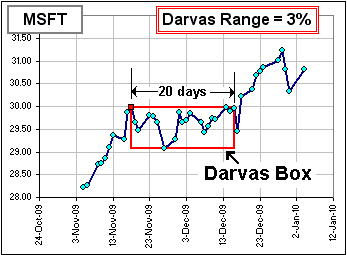 |
Anyway, I got this spreadsheet that'll download a year's worth of daily stock prices and look for "narrow trading ranges".
It looks like this (where you can click on the picture to download the spreadsheet):
To find them thar "narrow trading ranges" this is what I did:
| 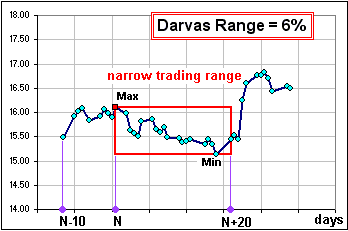 |
>What's "narrow"?
Oh ... I forgot. I calculate the height of the box as a percentage of the Maximum: (Max - Min) / Max.
That's the Darvas Range and measures how "narrow" the box. For example: (16.10 - 15.19) / 16.10 = 0.06 or 6%.
>Why 20 days? Why not 30 or 47 or ...?
I reckon a month is good and that's about 20 market days.
Anyway, the spreadsheet identifies all boxes over the past year so you can see what happens next ... whether there's a breakout and whether it's UP or DOWN.
|
>And how long you have to wait.
And whether it's a good scheme in bear markets. >And whether Darvas knew what he was doing. And whether you should adopt Darvas Boxes as your trading strategy. >And whether you should split your winnings with me. 
When Time magazine told the Darvas story in May, 1959, the DOW was on a roll. | 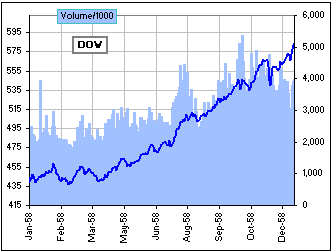 |
| >I assume he wrote a book.
Don't they always? Darvas wrote one in 1986. I was thinking of writing one myself ... | 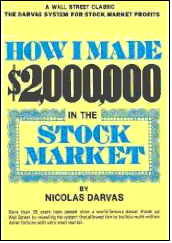 |
>If I wanted to see if prices break out of "narrow ranges", I'd want to see ALL the boxes for a bunch of stocks and ...
Hmmm ... good idea, so there's this spreadsheet:
You type in a gaggle of stocks then click the NextSTOCK button.
>So that's Darvas Boxes, eh?
Darvas? No, his system is more complex. What we're talking about is trading in a "narrow range" and prices inside a box.
That's what I find interesting so I just looked for these ...
>Then we've been talking about gummy boxes!
Uh ... yes, I guess so.
In gummy boxes, we've used the closing price each day. Darvas uses the actual daily Highs and Lows.
In gummy boxes, we've considered 20 market days ... about a month of market cativity.
Darvas looked at just a few days. His techniques may have been more like this:
| 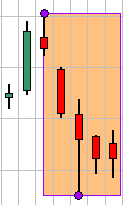 Top & Bottom of a Box |
>Is there someting magical about 3 days?
Wait ... I'll ask Darvas. 
Actually, he died about 30 years ago. His method is still being written and rewritten and modified and massaged.
Some have said that he made the technique purposefully vague in his book.
>I take it you don't really understand Darvas Boxes. Am I right?
Well ... yes.

